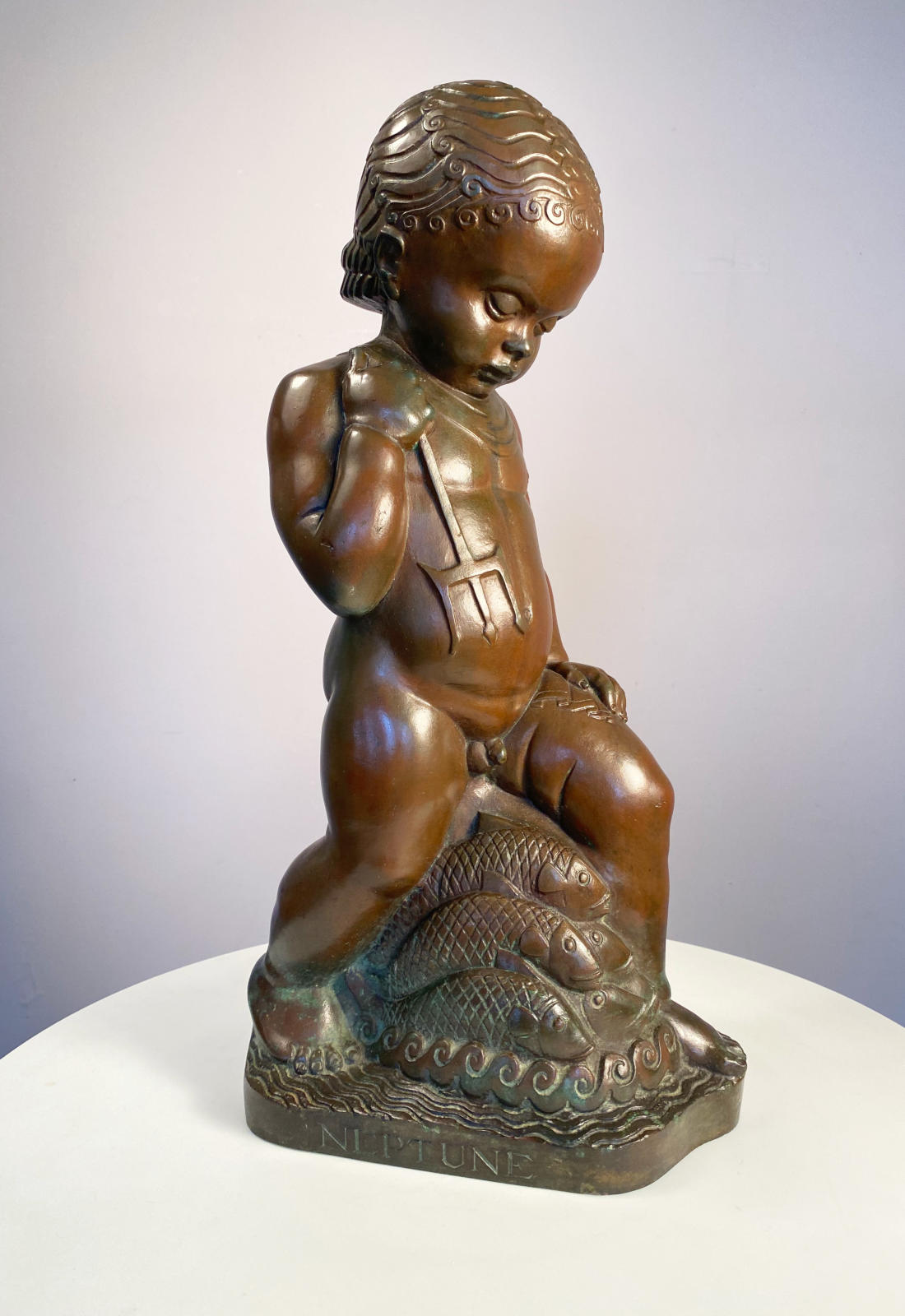artist
Sculptor and carver in various materials, painter and teacher, born in Manchester, where he attended the School of Art, gaining a Senior Scholarship. He won a National Scholarship, Royal College of Art, where he was taught by Francis Derwent Wood, being awarded his diploma in 1920; saw active service in World War I; and attended the Royal Academy Schools, winning a British Institution Scholarship, 1921, Landseer Prize, 1922, and Prix de Rome, 1923, enabling him to work at the British School at Rome. Held a number of teaching appointments, including Hammersmith, Central and Bromley Schools of Art and New York University. He was sculptor-in-residence at the Cranbrook Foundation, Bloomfield Hills, Michigan, in 1929. While in America, Evans did some important work on New York’s public buildings.
Description
Modeled shortly after his time at the Prix de Rome, Evans' Neptune reflects a synthesis of classical motifs—shaped by his years of study in Rome—and the modernist principles that were emerging during the 1920s. The sculpture combines the realism of the human form with the sleek, geometric lines and ornamental details typical of the Art Deco style. In this fanciful and stylized interpretation, Evans reimagines the God of the Sea not as a mature deity, but as a youthful figure, playfully astride a school of elegantly rendered, stylized fish. This fusion of classical tradition with modernist aesthetics creates a unique vision, where mythological themes are reinterpreted through the lens of contemporary design.
publications
Sculpture for a Modern Building, The Architectural Forum, Part 1: Architectural Design, January 1931. pp 78-79

















